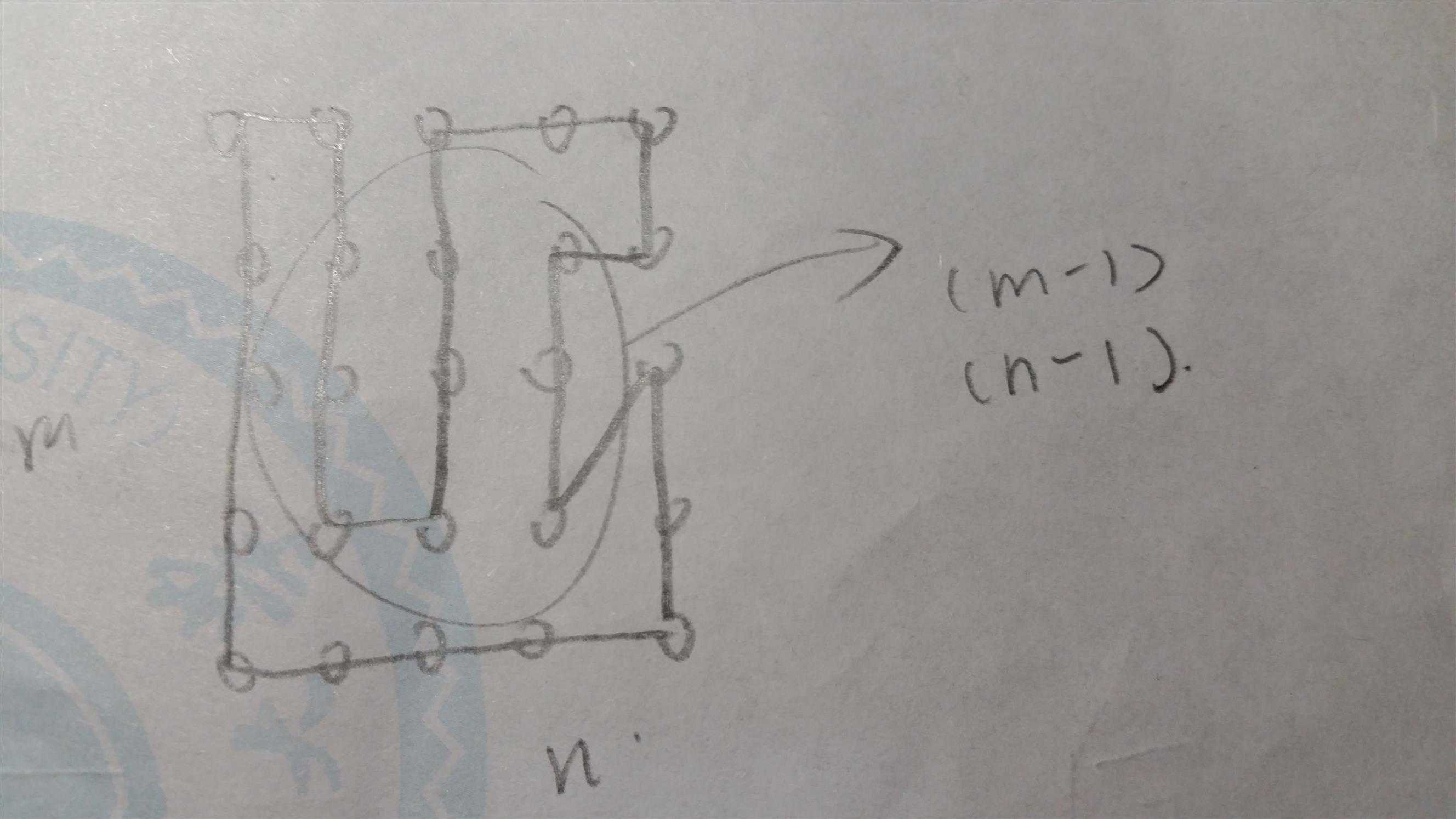标签:
最重要的是找规律。
下面是引用 http://blog.sina.com.cn/s/blog_4dc813b20100snyv.html
的讲解:
1 做这题时,千万不要被那个图给吓着了,其实这题就是道简单的数学题。 2 3 首先看当m或n中有一个为2的情况,显然,只需要算周长就OK了。即(m+n-2)*2,考虑到至少其中一个为2,所以答案为2 *m或2*n,亦即m*n。注意这里保证了其中一个数位偶数。 4 当m,n≥3时,考虑至少其中一个为偶数的情况,显然,这种情况很简单,可以得出,结果为m*n,又可以和上面这种情况合并。 5 6 下面看m,n均为奇数的情况,由于不好贴图,且这题又比较简单,就不多说了,就写个最后的公式吧: 7 (m+n-2)*2-1+sqrt(2)+(n-3)*(m-2)+(m-2)=m*n-1+sqrt(2) 8 本来还要考虑m,n互换后求最小值的,看到最后的公式后,也就不用再算了。考虑到题目里面要求保留两位小数,所以最终,公式直接定为:m*n+0.14
其中补充一张图,

原题:
For years, computer scientists have been trying to find efficient solutions to different computing problems. For some of them efficient algorithms are already available, these are the "easy" problems like sorting, evaluating a polynomial or finding the shortest path in a graph. For the "hard" ones only exponential-time algorithms are known. The traveling-salesman problem belongs to this latter group. Given a set of N towns and roads between these towns, the problem is to compute the shortest path allowing a salesman to visit each of the towns once and only once and return to the starting point.
The president of Gridland has hired you to design a program that calculates the length of the shortest traveling-salesman tour for the towns in the country. In Gridland, there is one town at each of the points of a rectangular grid. Roads run from every town in the directions North, Northwest, West, Southwest, South, Southeast, East, and Northeast, provided that there is a neighbouring town in that direction. The distance between neighbouring towns in directions North–South or East–West is 1 unit. The length of the roads is measured by the Euclidean distance. For example, Figure 7 shows 2 × 3-Gridland, i.e., a rectangular grid of dimensions 2 by 3. In 2 × 3-Gridland, the shortest tour has length 6.

Figure 7: A
traveling-salesman tour in 2 × 3-Gridland.
The first line contains the number of scenarios.
For each scenario, the grid dimensions m and n will be given as two integer numbers in a single line, separated by a single blank, satisfying 1 < m < 50 and 1 < n < 50.
The output for each scenario begins with a line containing "Scenario #i:", where i is the number of the scenario starting at 1. In the next line, print the length of the shortest traveling-salesman tour rounded to two decimal digits. The output for every scenario ends with a blank line.
2 2 2 2 3
Scenario #1: 4.00 Scenario #2: 6.00
Source: Northwestern
European 2001
源代码:
1 #include <iostream> 2 #include <iomanip> 3 #include <cmath> 4 using namespace std; 5 6 int main() { 7 int N; cin >> N; 8 for (int i = 0; i < N; i++) { 9 int a, b; double res, l; 10 cin >> a >> b; 11 if (a % 2 == 0 || b % 2 == 0) res = a * b; 12 else res = a * b - 1.0 + sqrt(2.0); 13 cout << "Scenario #" << i+1 << ":" << endl; 14 cout << fixed << setprecision(2) << res << endl; 15 cout << endl; 16 } 17 return 0; 18 }
标签:
原文地址:http://www.cnblogs.com/QingHuan/p/4263709.html